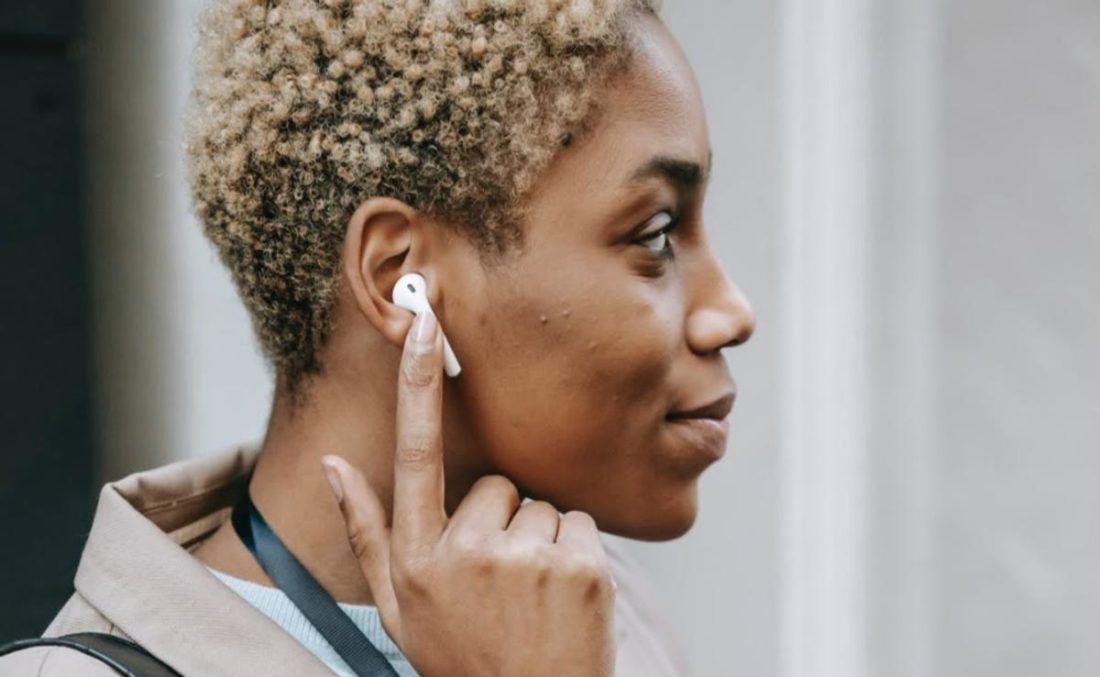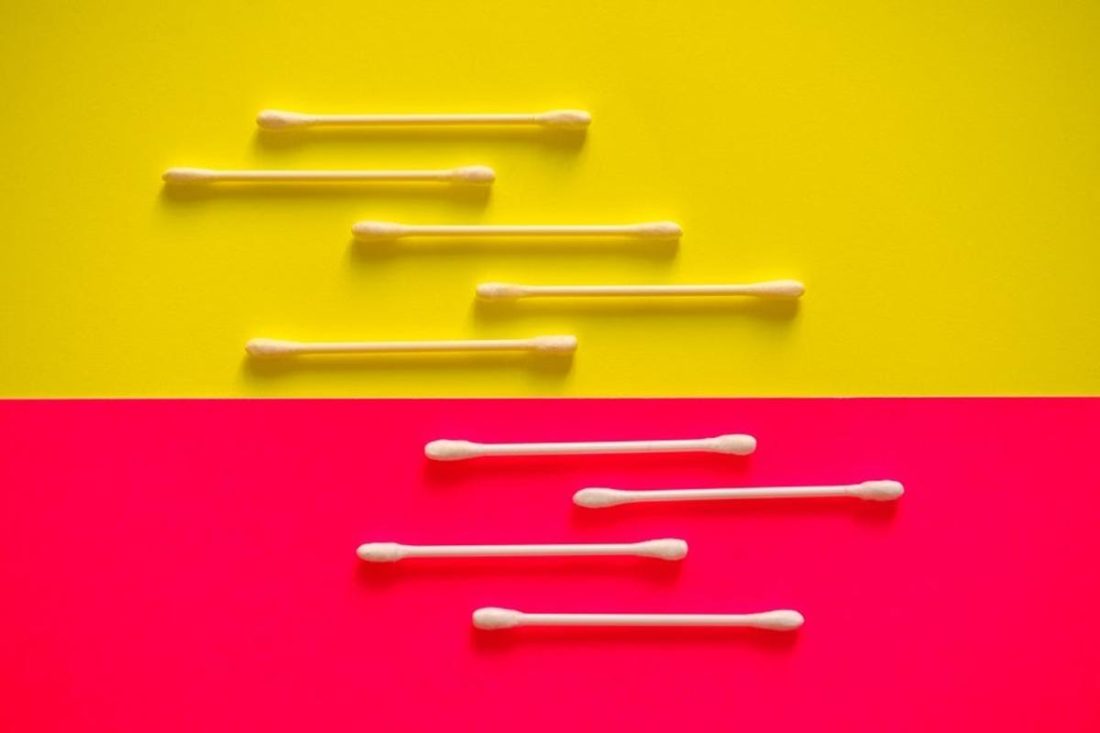So you go about your everyday routine with headphones on. But after a while, your ears start itching. You try to ignore it, but it just keeps getting worse. Soon, you give in and start scratching, only to feel something wet (and smelly) on your ears. Gross! You find yourself asking: Have I done this to myself? Can headphones cause ear infections? Your worry isn’t unfounded. You can be left wondering if you should avoid using headphones or earbuds entirely. But that’s also saying goodbye to private listening sessions and all the money you spent on upgrading your gear. Rest assured, though, because we’ve read the studies and compiled everything you need to know in this all-encompassing guide. So read on to find out the real story behind the relationship between headphones and ear infections; and some tips on how to avoid the worst.
Can Headphones Cause Ear Infections?
Yes, headphones can cause ear infections when used improperly. But you don’t have to throw away your headphones just yet. In fact, a study involving 136 customer service reps found just 4 cases of chronic middle ear infection and no cases of external ear canal infections caused by headphones. That’s less than 3% for people wearing headsets as a career. However, while the previous study’s numbers seem low, another study looking at bacterial loads in the ears found that frequent use of headphones increases bacterial growth. This is because when earbuds block air passages, they promote bacterial growth in your ear. Moisture also becomes locked in and stagnates. The presence of bacteria does not always mean an infection is imminent. But an unbalanced and unmanaged increase in bacteria will contribute to the problem. For example, the study demonstrated that bacteria could migrate from one person to another when uncleaned earbuds are shared, causing ear infections. Similarly, ear infections cannot be attributed to the type of headphones alone, but on how long they are worn and whether or not they are regularly cleaned and sanitized.
What Causes Ear Infections?
When we put things in our ears (like earbuds), we mess with the biological systems already in place to protect them. As a result, sometimes we end up with ear infections. Here is what’s actually going on:
Bacteria + moisture
The inside of your ears is dark and moist: two things bacteria love the most. This is because darkness protects them from the bacteria-killing UV light of the sun, while the moisture makes them a literal breeding ground for bacteria. This combination creates an environment where a harmful bacteria outbreak can quickly get out of hand. Unfortunately, using headphones or earbuds can aggravate these two factors. As previously mentioned, studies have shown a direct link between improper usage of earphones and bacterial growth. This results from changes in moisture movement in the ears and the introduction of outside bacteria by earbuds. Prolonged usage of earbuds (or very sealed headphones) closes up the ear canal from the outside world. As a result, moisture that should evaporate builds up in the ears instead. Bacteria arriving in the ear canal from your earbuds will quite possibly find this environment very tolerable, leading to infection.
Earwax build-up
Earwax, in and of itself, is relatively healthy. It protects against bacteria, viruses, dust, and other foreign particles throughout your ear canal. The wax flows through your ears slowly, keeping everything coated. However, earwax becomes a dangerous source of infections when pushed back repeatedly into your ear, also known as ear impaction. One common source of this type of pushing is the repeated insertion of earbuds or IEMs. The pushed-back earwax creates a sort of “dam” in your ear canal. This dam reduces the protective coating the rest of your ear gets, opening it up to infection. It also holds back moisture and old wax in your eardrum, causing disease. If this is the case for you, keep reading to find out more about how to properly clean your ears.
Scrapes on ear canal
If you’re pushing your earbuds in too roughly or too often, scrapes could break through your protective earwax layer or penetrate the sensitive skin of your inner ear, leading to infection. Other things to consider are as follows:
Burrs or nicks on hard plastic earbuds can be sharp and cause scraping. Gentle insertion of earbuds is recommended. Please don’t force it! If possible, buy custom fit, or semi-custom fit earbuds.
How to Prevent Ear Infections When Using Headphones or Earbuds
We can significantly reduce our chances of contracting an infection by following some common-sense practices. The following guidelines are the masking and handwashing equivalents in the headphones world.
Always clean your headphones or earbuds Clean your ears Never share your headphones or earbuds Allow your ears to breathe
Always clean your headphones or earbuds
Cleaning and sanitizing headphones and earbuds can help prevent the worst of infections. Experts suggest that this be done weekly or whenever earwax build-up can be seen in the grooves of your earbuds. Doctors have also noted other, unexpected health benefits of frequent cleaning of earbuds – not getting something lodged in your ear. In an interview with Healthline, family physician Dr. Sterling Ransone is quoted as saying: Frequent cleaning would have given the patient time to check over the device and make sure it was functioning correctly (or at least have complete parts).
Clean your ears
Mom always said to clean behind your ears, but have you had a proper education in cleaning inside your ears? While your ears are typically capable of self-cleaning, if you are experiencing an earwax backup, then cleaning becomes necessary. The backed-up wax will begin to accumulate bacteria and hold in moisture. At the most basic level, experts recommend that you wash the outside of your ears with a damp cloth. Despite common belief, never stick solid objects into your ears, which can further worsen ear wax build-up or even hurt your eardrums. Instead of sticking something in your ear, try using an earwax softener. Advanced techniques include using a syringe to irrigate your ears.
Never share your headphones or earbuds
Having one earbud in your ear and another in your lover’s is a classic way to bond over a song, but a risky one. In-eas pick up bacteria from your ear and easily transmit it to your partner. However, as people are returning to the office and school computer labs are open once more, some of us will be forced to share headphones. We’ve written about what to do when forced to share headphones before, but here are the basics:
Try using disposable headphone covers. Clean before usage. Make the office staff aware of the importance of replacing ear cushions regularly. Keep up your ear cleaning routine.
Allow your ears to breathe
Can headphones cause ear infections from overuse? Absolutely! Both earbuds and headphones reduce airflow inside the ears, which can lead to moisture and earwax build-up in the ear. Now, the problem here isn’t all about wax, of course. Prolonged headphone usage is also responsible for ear damage due to high volumes. Because of this, using headphones for only 90 minutes at a time at 80% volume is the general rule, according to Dr. Sharon A. Sandridge, an audiologist from Cleveland Clinic Otolaryngology. If you wish to extend that period, you’d need to turn down the volume even further and take breaks every few minutes.
Other Health Issues Associated with Headphone Use
Aside from ear infections, improper use of headphones and earbuds can cause more problems. Unfortunately, some can be irreparable and can become worse if it happens at the same time as your headphones-related ear infection. Here are the most common health issues caused by inappropriate headphone usage:
Hearing loss & impairment
We all know that listening to loud music can damage your ears and lead to hearing loss. Health experts warn that regular exposure to loud sounds, especially through headphones, can also cause tinnitus and hyperacusis. Tinnitus presents itself as an unwanted ringing in the ear, even in quiet surroundings, and is caused by extended exposure to loud noises. Hyperacusis is a complex disease that causes hypersensitivity to certain sounds. While the exact cause is unknown, tinnitus, hearing loss, exposure to loud noise, and frequent ear infections are all positively associated with the condition.
Ear pain
Ear pain is commonly associated with ear infections, but not all ear pain results from an ear infection. Research shows that extended usage of headphones and earbuds can cause pain as well. Ill-fitting or overly tight headphones can put pressure on the soft flesh of the outer ear or stretch sensitive inner-ear cartilage too much. If your ears hurt while wearing headphones, look out for materials such as memory foam, velour, and leather for padding. Consider getting custom-made (or semi-custom, such as in the Queen of Audio Vesper) IEMs and earbuds to find the perfect shape for your ear. Lastly, make sure you are wearing your headphones correctly.
Ear numbness
For the most part, ear numbness will occur for the same reasons that ear pain will, as described above. For these situations, the same advice applies – wear looser headphones, appropriately sized earbuds/IEMs, and wear them properly. However, people who work with headphones frequently (like work-from-home individuals) face another source of ear numbness, a.k.a. Acoustic Shock Injury (ASI). ASI is triggered by unexpected exposure to uncomfortably loud sounds. Examples include grounded noises from your headphones, yelling from the other side of the call, and loud echoes. Symptoms of the condition include burning, numbness, and a sensation of blockage in the ear. Tinnitus, vertigo, and psychological shock are also reported.
Otitis Externa
Also known as swimmer’s ear, Otitis Externa starts as an itchy rash and quickly becomes painful if not treated. This disease is typically caused by one of two routes: water or injury. The water route is how ‘swimmer’s ear’ gets its name, as any activity that frequently exposes the insides of your ear to water can bring on the illness. The route we’re interested in is slightly different, though: injury. As mentioned earlier, scrapes on the ear canal can be caused by roughly inserting earbuds, earplugs, or other objects in your ears. Your earbuds may also break a hole through your protective wax layer, your ear’s natural protective armor, leaving your ear defenseless to infection.
Conclusion
That burning question, “Can headphones cause ear infections?” has been answered with a resounding yes. Luckily, you now know to disinfect your headphones with alcohol weekly, never share your headphones, and reduce headphone time. After a round of ear drops, you’ll be good to go! We’re really excited to hear your feedback on the article. How savvy is your headphone and earbud hygiene? Does it involve weekly cleanups, or is that a bit too excessive for you? And, ultimately, are headphones bad for your ears? Let us know in the comments below!



